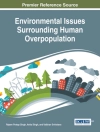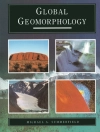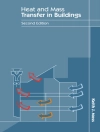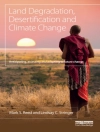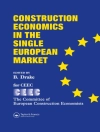This book focuses on the ways in which resiliency can foster the transformation of cities. There is a growing need for our cities to be transformed into “smart” cities; in this regard, tremendous efforts are called for in order to face the environmental challenges that play a major role in the creation or transformation of cities and environments.
This book covers a broad range of applications and approaches that are “smart” and “resilient, ” which, when combined, offer much more flexibility concerning the future of our cities. Consequently, this simple combination, which is producing sweeping changes around the globe, has attracted considerable attention from scholars and decision-makers alike.
Table of Content
Residents’ Satisfaction towards Transformation of Klang River in Klang District, Selangor.- Are the New Towns really smart?.- Study on the Planning of the Characteristic Town Which Undertake Function Spillover of Big Cities.- Localizing the Globalized – How not to Fail in Smart Cities Frameworks.- Choice of Travel Mode for Work Trips for Dhaka city to Enhance Travel Experience.- Exploration of Urban Regeneration and Design of Characteristic Streets: A Case Study of Chengxian Street.- Integrating Pedestrian Circulation with Proposed Rapid Transit Route: Design Proposal of a Skywalk for Smart Dhaka.- The Importance of Green Commuting – A Campus Case Study in Schwäbisch Hall as Contribution to Responsible Urbanism.- Rumor Clock: Visual Representation of Online Rumor Spreading.- Towards building of visualization method to highlight top users’ trends in social networks.
About the author
Doctor Anna Laura Pisello is currently Assistant Professor of Applied Physics at the University of Perugia in Italy. She is the author of more than 80 papers of which 50 of them are published in international peer-reviewed journals. She is the winner of five international academic awards 2013–2017. She serves as Editor-in-Chief of “Environmental Sciences and Sustainable Development” (IEREK). Her research falls into two main areas of interest: innovative smart materials for the multifunctional optimization and thermos physics characterization of building envelopes, and indoor–outdoor microclimate for environmental comfort and energy saving, with dedicated attention to the resilience of dense urban areas and cities to climate change. Within the framework of these two main themes, she investigates the following topics: energy efficiency and thermal energy performance optimization in buildings, new analysis methods for estimating the effect of innovative strategies, continuous monitoring techniques for detecting building thermal energy performance, high albedo solutions for passive cooling and as mitigation strategy against urban heat island phenomenon, local climate boundary conditions affecting building thermal energy behavior, indoor–outdoor microclimate analysis for preserving cultural heritage. Doctor Pisello is Series Editor responsible for book proposals submitted in the field of Alternative and Renewable Energies in Architecture and Urbanism.
Dr. Tomohiro Fukuda is an associate professor in the Division of Sustainable Energy and Environmental Engineering, Graduate School of Engineering, Osaka University, Japan. He obtained his Ph.D. (1999), M.E. (1996) and B.E. (1994) in environmental engineering at Osaka University. He worked for Matsushita Electric Works Co., Ltd. (Current: Panasonic Corporation) from 1996 to 2004, and then has been an associate professor at Osaka University since 2004. His research interests are mainly environmental design and engineering, design support, computer-aided architectural design, spatial informatics and science, and media architecture. Especially he has developed environmental design support methods using Virtual, Augmented and Mixed reality (VR/AR/MR), 3 dimensional modeling, CFD (Computational Fluid Dynamics), BIM (Building Information Modeling), and AI (Artificial Intelligence). He has applied his developed methods to actual design projects such as Patio Design in Takamatsu Japan (2005-07), Next Gene 21+ in Taiwan (2007-08), VR Azuchi Castle in Omihachiman Japan (2011-15), and Mizuki Shigeru Road Renewal in Sakaiminato Japan (2016-18). He is a former president of CAADRIA (the association of Computer Aided Architectural Design Research in Asia) and past Representative of AIJ (Architectural Institute of Japan). He is a member of e CAADe (Education and research in Computer Aided Architectural Design in Europe), JSCE (Japan Society of Civil Engineers), CPIJ (The City Planning Institute of Japan), etc. He has published over 200 journal and international conference papers, and 13 books (collective writing). He was made a CAADRIA Fellow (2019) and won the best award of the Kobe lighting design competition (2001), etc.
Prof. Dr. Norsidah Ujang is Associate Professor at the Department of Landscape Architecture, Faculty of Design and Architecture, Universiti Putra Malaysia. She received her Ph.D. in Architectural Studies from Universiti Putra Malaysia; Masters in Urban Design; Diploma in Architecture (RIBA Part II) from Oxford Brookes University, UK; and a Bachelor of Architecture from the University of Miami, USA. She engaged with CNL Architect & Designers and Arkitek Rekabina before joining the academia. She was appointed as Deputy Dean (Academic and Student Affairs/Alumni) (2008–2013) and attached as Visiting Scholar at the Department of Planning and Urban Studies, MIT under the UTM-MIT Sustainable Cities Program (Cohort 2015–2016).
Dr. Dinko Vukadinović was born in Banja Luka, Bosnia and Herzegovina, in 1973. He received the B.E. degree from the University of Split, the M.E. degree from the University of Zagreb and the Ph.D. degree from the University of Split, Croatia, in 1997, 2002 and 2005, respectively, all in Electrical Engineering. He became Junior Researcher in the University of Split, Faculty of Electrical Engineering, Mechanical Engineering and Naval Architecture (FESB), Department of Electric Power Engineering, in 1998. In 2013, he became Full Professor at the same university. In 2009, he also became Chair of Power Electronics and Control at the University of Split, FESB.
He is an editorial board member of the following international scientific journals: Journal of Convergence Information Technology, International Journal of Innovative Research and Development, Electrical and Electronic Engineering and International Science Journal. His current research interests include induction machine control systems, power electronics, and artificial intelligence. He has published a number of papers in scientific journals and conferences.



